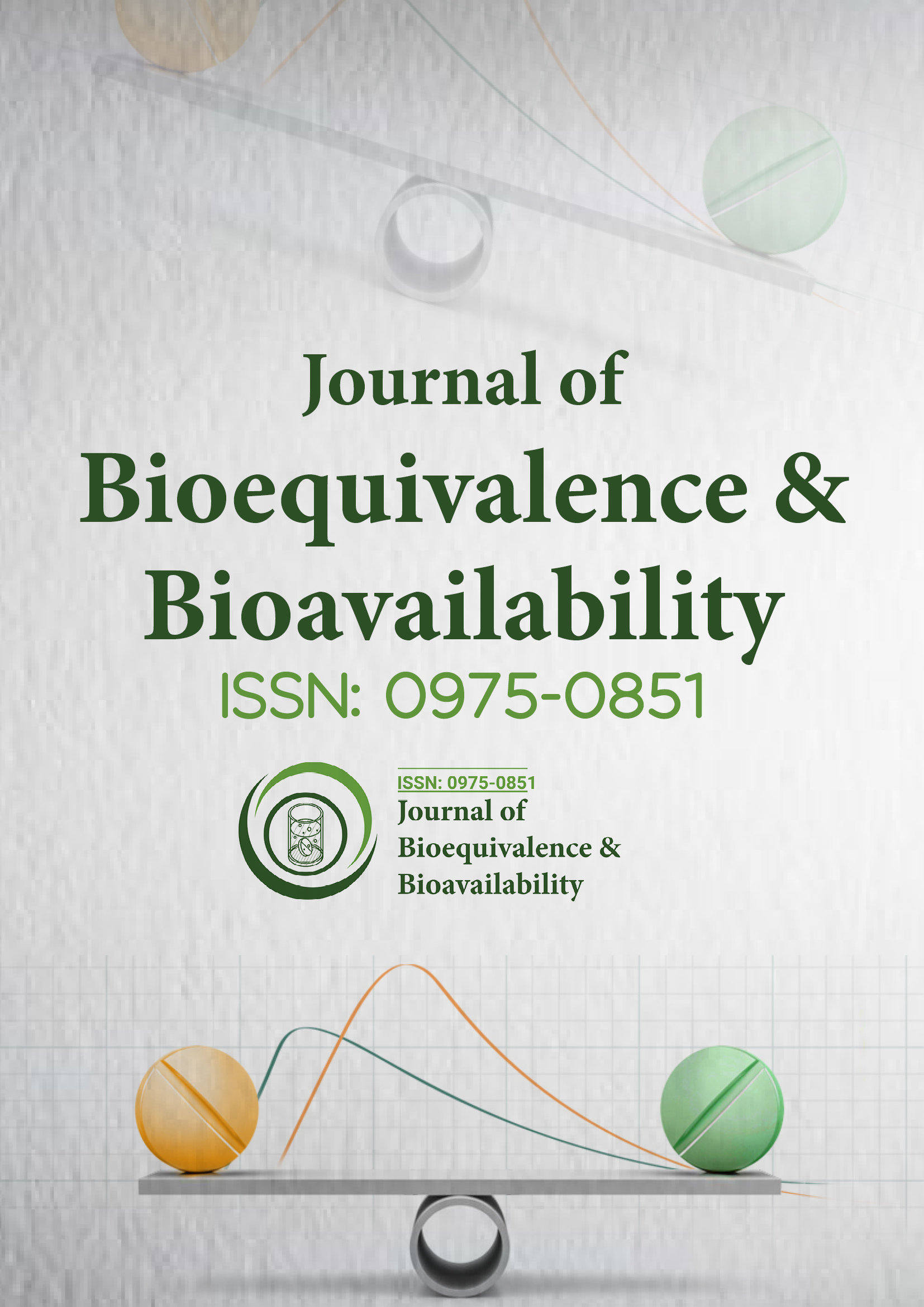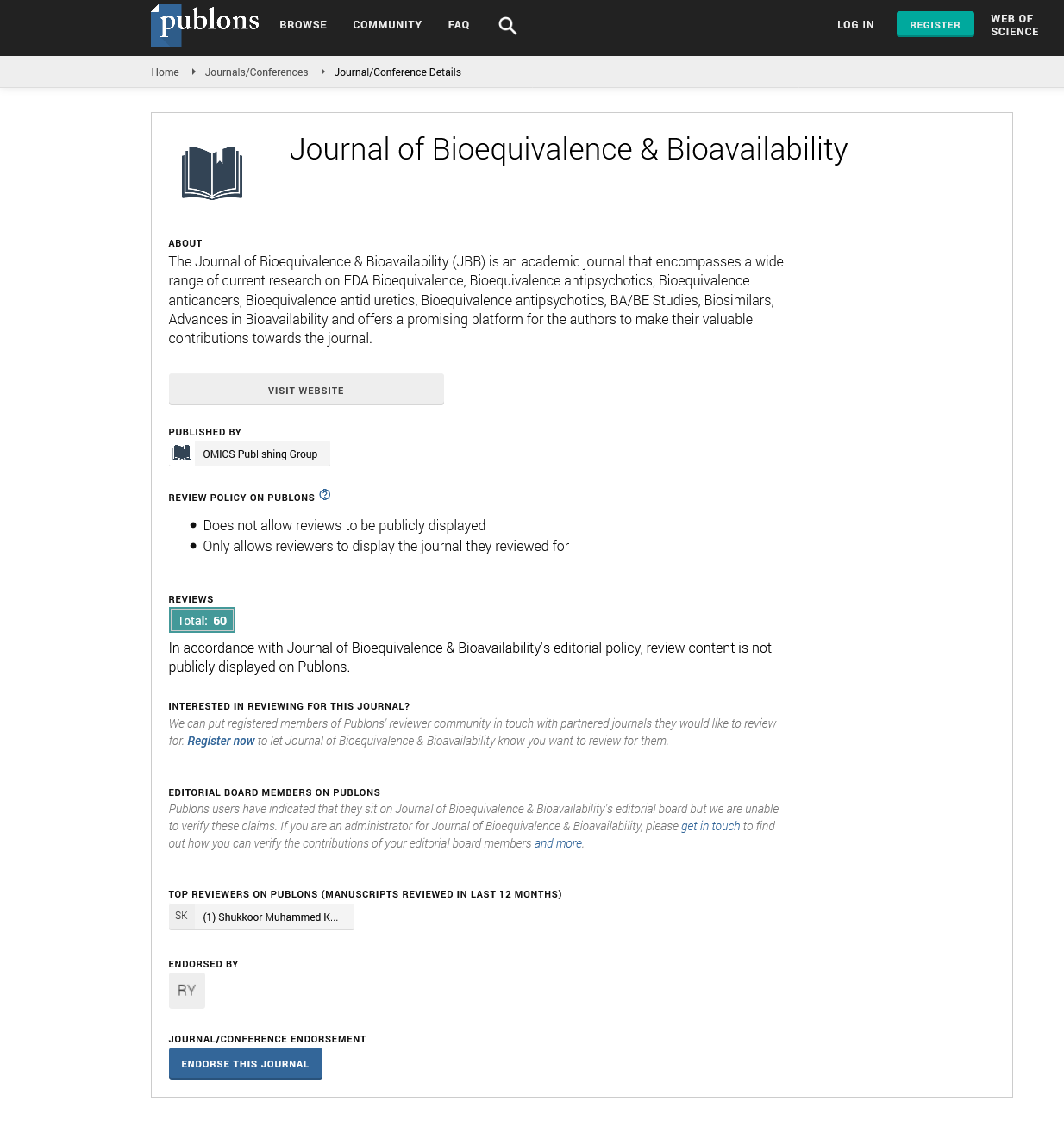Indexed In
- Academic Journals Database
- Open J Gate
- Genamics JournalSeek
- Academic Keys
- JournalTOCs
- China National Knowledge Infrastructure (CNKI)
- CiteFactor
- Scimago
- Ulrich's Periodicals Directory
- Electronic Journals Library
- RefSeek
- Hamdard University
- EBSCO A-Z
- OCLC- WorldCat
- SWB online catalog
- Virtual Library of Biology (vifabio)
- Publons
- MIAR
- University Grants Commission
- Geneva Foundation for Medical Education and Research
- Euro Pub
- Google Scholar
Useful Links
Share This Page
Journal Flyer

Open Access Journals
- Agri and Aquaculture
- Biochemistry
- Bioinformatics & Systems Biology
- Business & Management
- Chemistry
- Clinical Sciences
- Engineering
- Food & Nutrition
- General Science
- Genetics & Molecular Biology
- Immunology & Microbiology
- Medical Sciences
- Neuroscience & Psychology
- Nursing & Health Care
- Pharmaceutical Sciences
Perspective - (2025) Volume 17, Issue 1
Impact of Drug Formulation Differences on Therapeutic Equivalence in Complex Generic Products
Chris Gernald*Received: 03-Feb-2025, Manuscript No. JBB-24-28937; Editor assigned: 05-Feb-2025, Pre QC No. JBB-24-28937 (PQ); Reviewed: 18-Feb-2025, QC No. JBB-24-28937; Revised: 25-Feb-2025, Manuscript No. JBB-24-28937 (R); Published: 04-Mar-2025, DOI: 10.35248/0975-0851.25.17.618
Description
Therapeutic equivalence is a fundamental concept in the realm of bioequivalence studies and plays a central role in the approval and widespread use of generic drug products. At its core, therapeutic equivalence implies that a generic product provides the same clinical benefit and safety profile as its Reference Listed Drug (RLD) when administered under the conditions specified in the labeling. Achieving therapeutic equivalence requires a comprehensive evaluation that combines pharmaceutical equivalence and bioequivalence, underscoring the scientific rigor and regulatory scrutiny involved in generic drug development.
The evaluation of therapeutic equivalence in special populations. While bioequivalence studies are generally conducted in healthy adult volunteers, the actual target populations may include pediatric, geriatric, or chronically ill patients. These populations may exhibit different pharmacokinetic profiles due to physiological or pathological factors, necessitating careful extrapolation of study results. Although regulators allow certain extrapolations, there is growing recognition of the need for population-specific data to ensure that therapeutic equivalence holds true across diverse demographic groups.
The issue of interchangeability is closely linked to therapeutic equivalence. An interchangeable generic product is one that can be substituted for the reference drug without the intervention of the prescribing healthcare provider. In the United States, only a subset of generics are designated as interchangeable by the FDA, often requiring additional evidence, such as switching studies, to demonstrate that patients can be safely transitioned between products without loss of efficacy or increased risk. This distinction underscores the importance of robust therapeutic equivalence data, particularly for complex or sensitive drug products.
Therapeutic equivalence also has implications for global health. In low- and middle-income countries, access to affordable medications is often limited, and generic drugs play a vital role in expanding treatment availability. Ensuring the therapeutic equivalence of these products is critical for maintaining public trust in healthcare systems and improving treatment outcomes. International harmonization of bioequivalence standards, spearheaded by organizations like the World Health Organization (WHO), helps to facilitate cross-border approval and distribution of generic drugs. However, disparities in regulatory capacity and enforcement remain challenges that need to be addressed through collaborative efforts and capacitybuilding initiatives.
Technological advancements are reshaping the landscape of therapeutic equivalence evaluation. The integration of modeling and simulation approaches, such as Physiologically-Based Pharmacokinetic (PBPK) modeling, offers a powerful tool for predicting drug behavior and supporting bioequivalence assessments. These models can simulate various physiological conditions, patient populations, and formulation scenarios, thereby enhancing the understanding of therapeutic equivalence beyond empirical data alone. Furthermore, the application of artificial intelligence and machine learning to pharmacokinetic and clinical data may uncover new patterns and predictive markers, opening up possibilities for personalized bioequivalence assessments.
The future of therapeutic equivalence lies in a more holistic and individualized approach. As personalized medicine continues to evolve, the one-size-fits-all paradigm of generic drug approval may need to adapt. Tailored bioequivalence criteria based on patient genetics, disease state, and drug interactions could become part of the regulatory landscape. While this introduces complexity, it also offers the opportunity to optimize therapy and improve patient outcomes.
In conclusion, therapeutic equivalence is a cornerstone of modern pharmacotherapy, ensuring that generic drugs deliver the same clinical benefit and safety as their brand-name counterparts. Its foundation rests on rigorous scientific assessments of pharmaceutical and bioequivalence, guided by regulatory standards that balance statistical precision with clinical relevance. Despite the challenges posed by formulation variability, population diversity, and complex drug products, therapeutic equivalence remains a vital pathway for providing cost-effective, accessible, and high-quality medications. As science and technology advance, the methods used to evaluate therapeutic equivalence will continue to evolve, offering more nuanced and patient-centered approaches. Ultimately, maintaining the integrity and credibility of therapeutic equivalence assessments is essential for safeguarding public health and fostering confidence in generic drug therapies worldwide.
Citation: Gernald C (2025). Impact of Drug Formulation Differences on Therapeutic Equivalence in Complex Generic Products. J Bioequiv Availab. 17:618.
Copyright: © 2025 Gernald C. This is an open-access article distributed under the terms of the Creative Commons Attribution License, which permits unrestricted use, distribution, and reproduction in any medium, provided the original author and source are credited.

